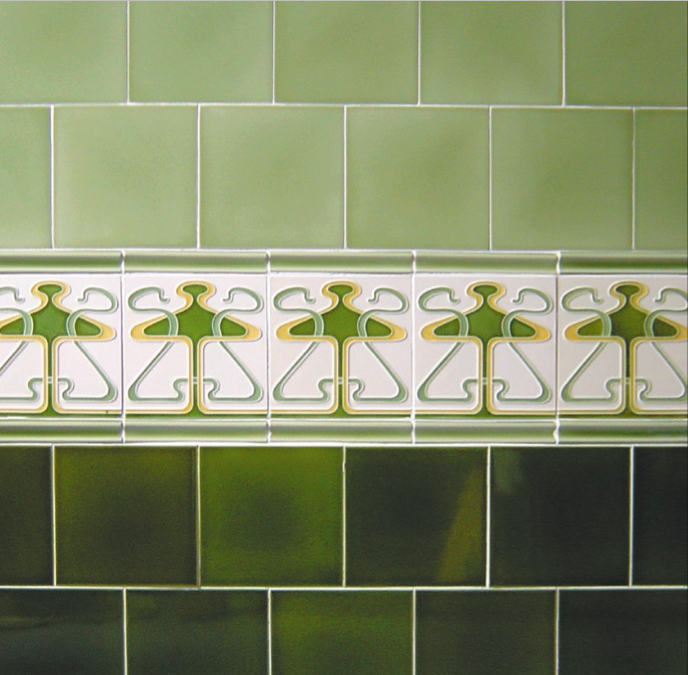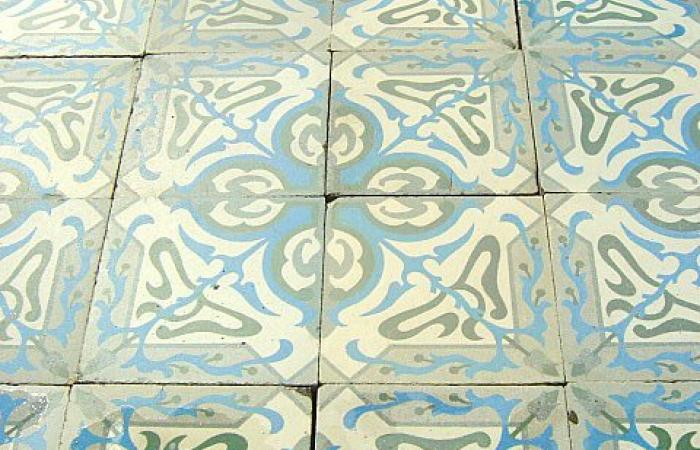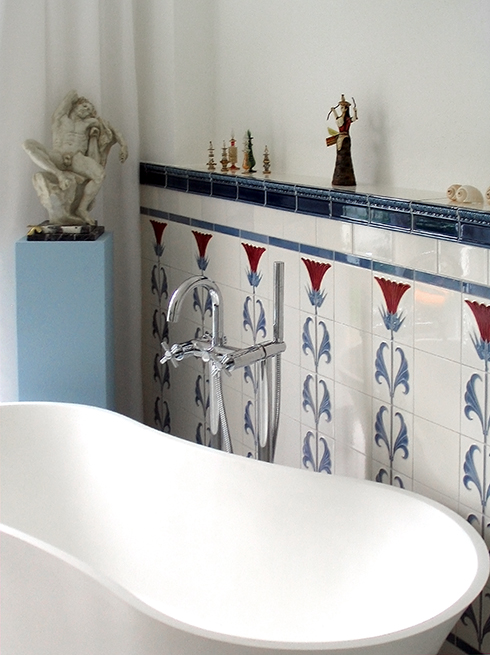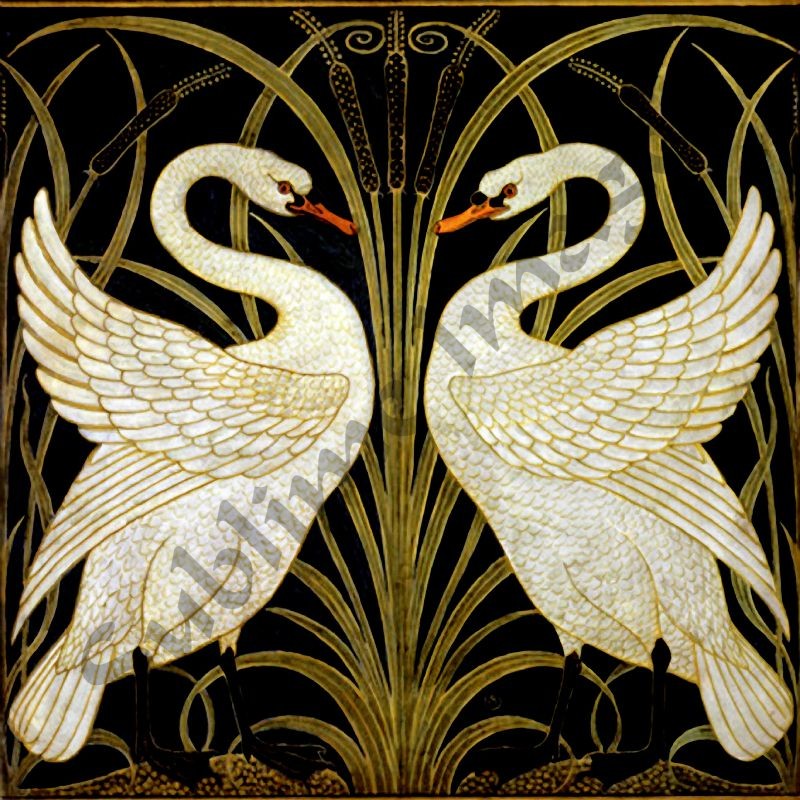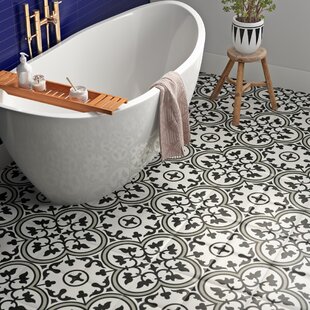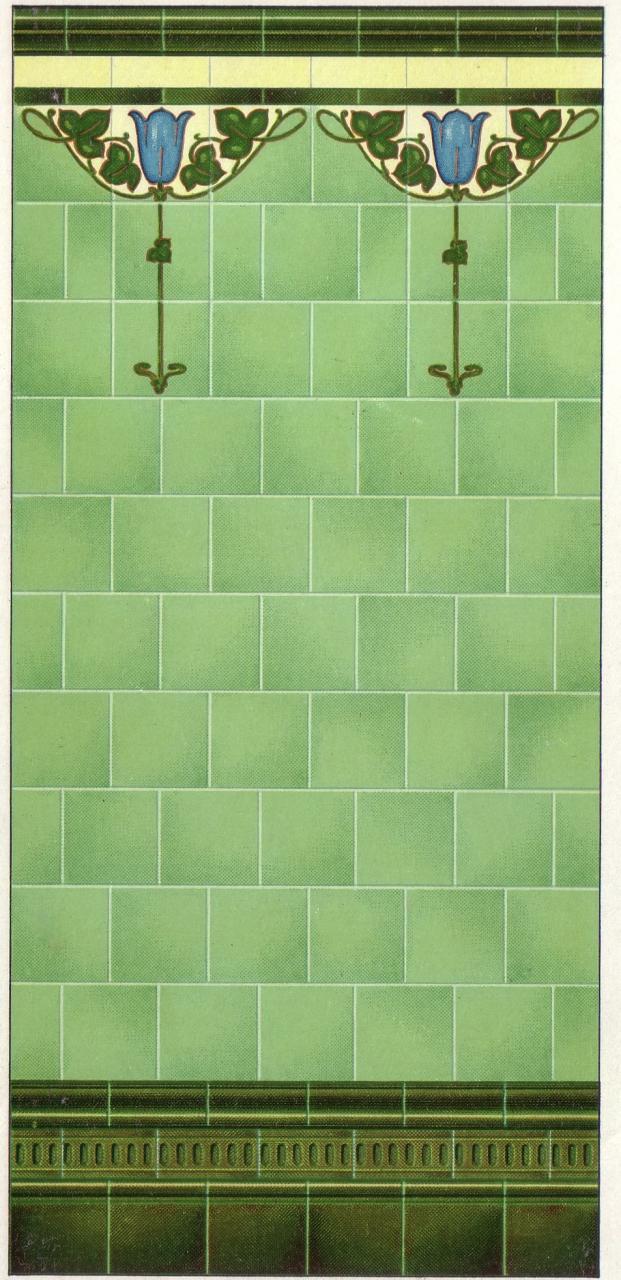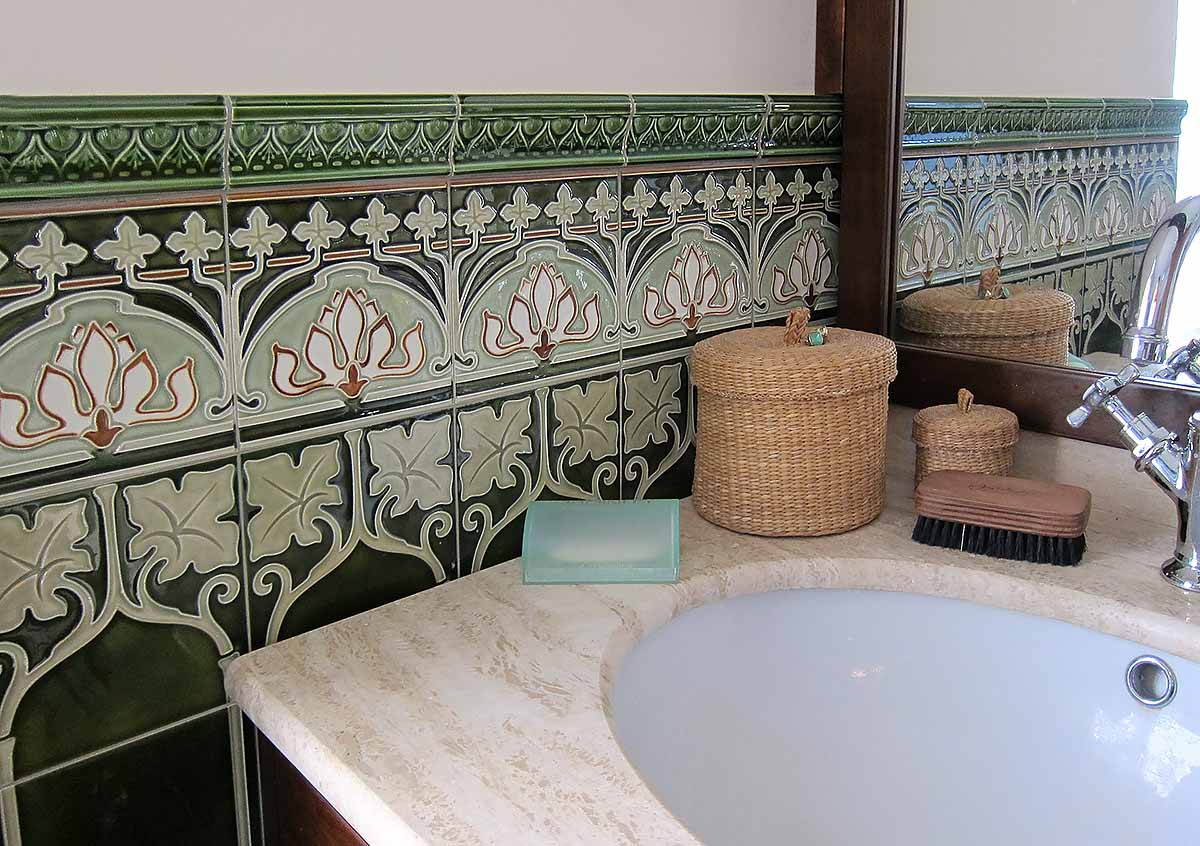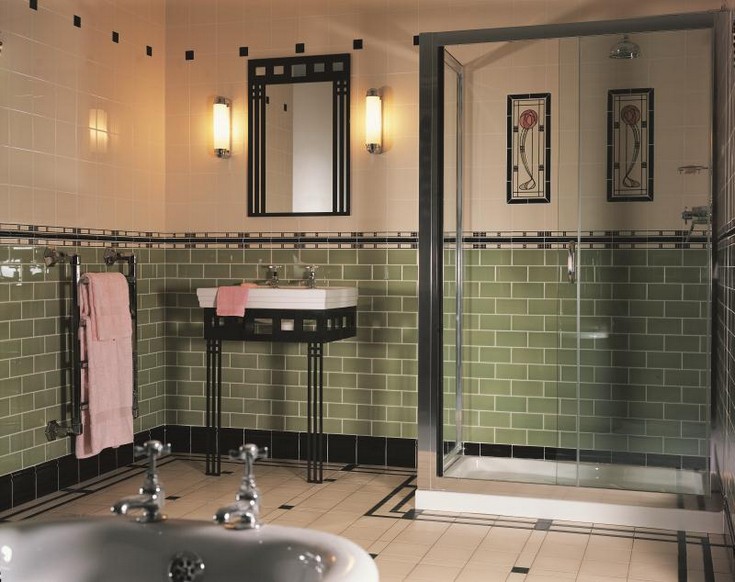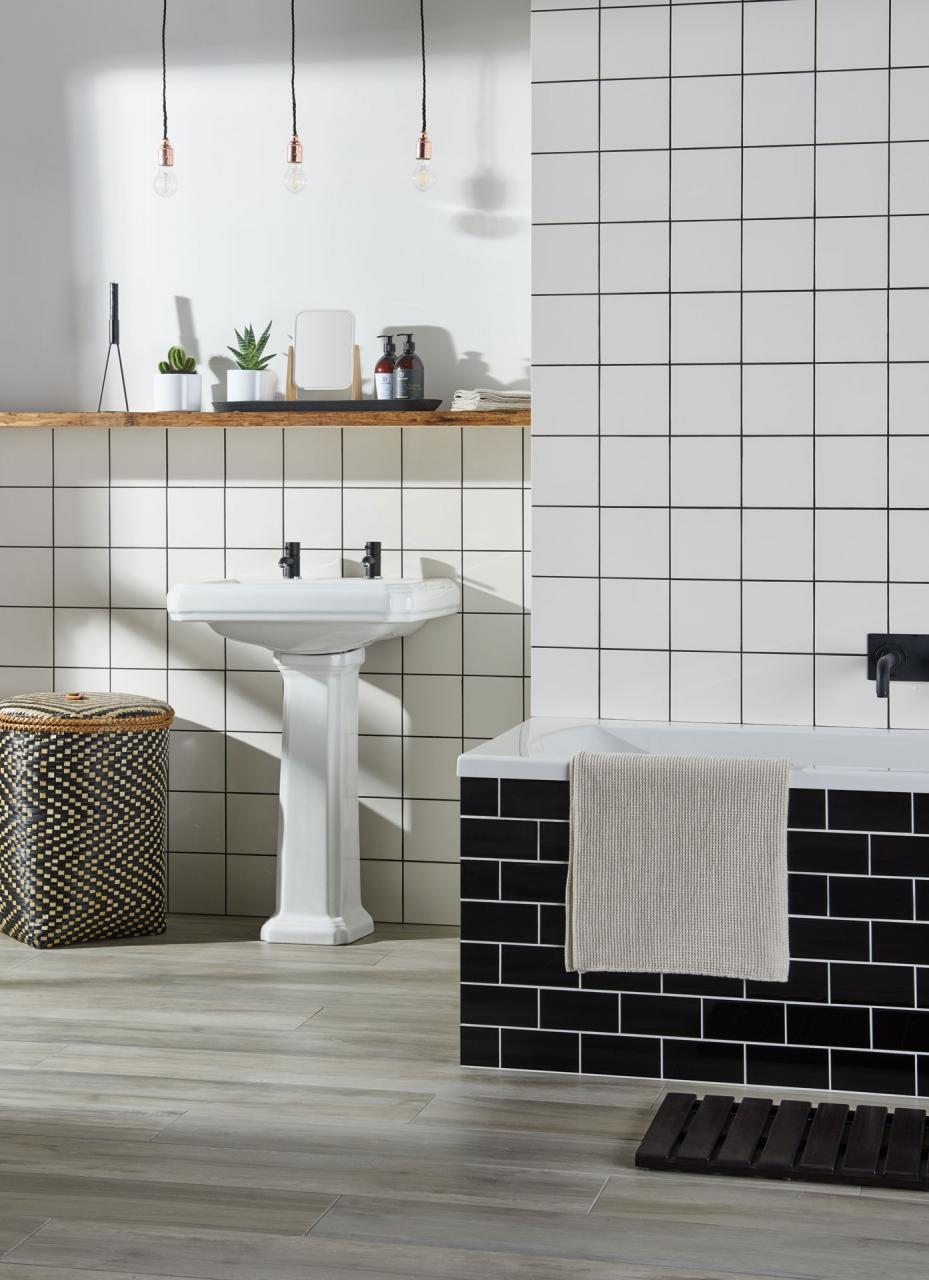Origins and Influences of Art Nouveau in Bathroom Design
Art Nouveau, a captivating artistic movement that emerged in the late 19th century, profoundly influenced various aspects of design, including interior spaces such as bathrooms. Originating in Europe, particularly in France, Art Nouveau sought to break away from the rigid structures of academic art and embrace organic forms inspired by nature. Let’s discuss the origins and influences of Art Nouveau in bathroom design, exploring how this movement transformed the way we perceive and adorn these intimate spaces.
- Historical Context: The roots of Art Nouveau can be traced back to the rapid industrialization and technological advancements of the late 19th century. As society transitioned into modernity, artists and designers sought to rebel against the mechanization of craftsmanship and revive the beauty of handmade goods. Influenced by the Arts and Crafts movement, as well as Japanese art and the natural world, Art Nouveau emerged as a celebration of organic forms and intricate details.
- Inspiration from Nature: Central to the ethos of Art Nouveau is its reverence for nature. Artists drew inspiration from the flowing lines of plants and flowers, the sinuous curves of vines, and the graceful movements of animals. These motifs were translated into intricate patterns and motifs that adorned various surfaces, including tiles used in bathrooms. The aim was to create harmonious spaces that reflected the beauty of the natural world.
- Emphasis on Craftsmanship: Unlike the mass-produced goods of the Industrial Revolution, Art Nouveau placed a premium on craftsmanship and individual expression. Artisans experimented with innovative techniques and materials to bring their designs to life. This emphasis on craftsmanship extended to every aspect of bathroom design, from the tiles lining the walls to the fixtures and furnishings within the space.
- Integration of Art and Architecture: Art Nouveau sought to dissolve the boundaries between art and everyday life, seamlessly integrating artistic expression into architecture and interior design. In bathrooms, this meant incorporating decorative elements such as stained glass windows, intricate tiling, and sculptural details. These elements transformed bathrooms from purely utilitarian spaces into works of art in their own right.
- Legacy and Influence: While the Art Nouveau movement was relatively short-lived, its influence can still be seen in contemporary design. The emphasis on organic forms, intricate details, and craftsmanship continues to inspire designers and homeowners alike, particularly in the realm of bathroom design. Whether through the use of Art Nouveau-inspired tiles or the incorporation of nature-inspired motifs, the legacy of this movement lives on in modern bathrooms around the world.

Characteristics and Aesthetics of Art Nouveau Bathroom Tiles
Art Nouveau, with its emphasis on organic forms and intricate details, transformed the world of design in the late 19th and early 20th centuries. One of the most iconic elements of Art Nouveau design is the use of decorative tiles, which were often employed to adorn interior spaces, including bathrooms. Below are the characteristics and aesthetics of Art Nouveau bathroom tiles, delving into the motifs, colors, and techniques that define this distinctive style.
Sinuous Lines and Curvilinear Forms: At the heart of Art Nouveau tile design are sinuous lines and curvilinear forms that mimic the shapes found in nature. Tiles often feature flowing patterns inspired by plants, flowers, and vines, creating a sense of movement and fluidity within the space. These organic forms are characterized by their asymmetry and lack of strict geometric boundaries, reflecting the artistic freedom and expression of the Art Nouveau movement.
Natural Motifs and Symbolism: Art Nouveau tiles are adorned with a rich array of natural motifs and symbolism, ranging from delicate floral patterns to exotic fauna. Flowers such as lilies, irises, and roses are commonly depicted, symbolizing beauty, growth, and renewal. Other motifs, such as butterflies, dragonflies, and peacocks, evoke themes of transformation and spirituality. These motifs are often rendered in vibrant colors and intricate detail, adding depth and visual interest to the tiles.
Rich Colors and Textures: Art Nouveau tiles are renowned for their use of rich, vibrant colors and textures that engage the senses and create a sense of warmth and intimacy in the bathroom. Earthy tones such as greens, browns, and yellows are often paired with jewel-like hues of blue, purple, and red, creating a dynamic interplay of color and light. Tiles may also feature matte or glossy finishes, adding depth and dimension to the overall design.
Exquisite Craftsmanship: Craftsmanship is paramount in Art Nouveau tile design, with artisans employing a variety of techniques to create tiles of exquisite beauty and quality. Tiles may be hand-painted, hand-carved, or molded using traditional methods, resulting in unique and intricate designs that showcase the skill and creativity of the maker. Some tiles may also incorporate elements of other materials, such as metal or glass, adding further complexity and visual interest to the design.
Integration with Architecture and Design: Art Nouveau tiles are designed to seamlessly integrate with the architecture and design of the bathroom, enhancing the overall aesthetic and atmosphere of the space. Tiles may be used to create focal points, accentuate architectural features, or cover entire walls and surfaces, transforming the bathroom into a luxurious and immersive environment. Whether used sparingly as accents or employed lavishly to create a bold statement, Art Nouveau tiles add a touch of elegance and sophistication to any bathroom.
Crafting Art Nouveau Tiles: Techniques and Materials
Art Nouveau tiles are renowned for their intricate designs, vibrant colors, and exquisite craftsmanship. Here are the techniques and materials used in crafting Art Nouveau tiles, from traditional methods handed down through generations to innovative techniques that push the boundaries of the medium.
Hand-Painted Tiles: One of the hallmark techniques of Art Nouveau tile production is hand-painting. Skilled artisans meticulously paint intricate designs onto ceramic tiles using fine brushes and vibrant pigments. This labor-intensive process allows for a high level of detail and customization, with each tile bearing the unique imprint of the artist’s hand. Hand-painted tiles may feature motifs inspired by nature, mythology, or the decorative arts, adding a touch of elegance and individuality to any space.
Relief and Embossing: Another common technique used in Art Nouveau tile production is relief and embossing. Artisans create three-dimensional designs by sculpting or pressing patterns into the surface of the tile, resulting in raised or recessed areas that add depth and texture to the design. Relief tiles may feature motifs such as flowers, foliage, or geometric patterns, while embossed tiles often incorporate intricate details and arabesques inspired by Islamic art and architecture.
Mosaic and Inlay: Mosaic and inlay techniques are also prevalent in Art Nouveau tile production, allowing artisans to create intricate patterns and designs by piecing together small tiles or fragments of tile into larger compositions. Mosaic tiles may feature geometric patterns, floral motifs, or abstract designs, while inlay tiles often incorporate contrasting colors and materials to create striking visual effects. These techniques lend themselves well to both traditional and contemporary applications, adding a sense of luxury and sophistication to any space.
Kiln-Fired Finishes: Once the tiles have been crafted and decorated, they are fired in a kiln to fix the colors and create a durable finish. Kiln-firing is a crucial step in the production process, as it ensures that the colors remain vibrant and the designs are permanently sealed onto the surface of the tile. Depending on the desired effect, tiles may be fired multiple times at different temperatures to achieve the desired level of gloss or matte finish.
Innovative Materials: While traditional ceramic and porcelain remain the primary materials used in Art Nouveau tile production, modern artisans are exploring innovative materials and techniques to push the boundaries of the medium. Glass, metal, and even recycled materials can be incorporated into tile designs, adding new textures, colors, and visual effects. These experimental approaches to tile production ensure that the legacy of Art Nouveau continues to evolve and inspire future generations of designers and craftsmen.
Incorporating Art Nouveau Tiles in Modern Bathroom Design
While Art Nouveau originated over a century ago, its influence continues to resonate in contemporary design. Let’s see how Art Nouveau tiles can be incorporated into modern bathroom design, adding a touch of timeless elegance and sophistication to any space.
Statement Wall: One of the most striking ways to incorporate Art Nouveau tiles into a modern bathroom is by creating a statement wall. Choose a prominent wall, such as the one behind the vanity or bathtub, and cover it with Art Nouveau tiles featuring intricate patterns and vibrant colors. This instantly transforms the space into a work of art, adding visual interest and personality to the room.
Accent Tiles: If covering an entire wall with Art Nouveau tiles feels too overwhelming, consider using them as accent tiles instead. Install a row of Art Nouveau tiles as a border or insert them sporadically among plain tiles to create a subtle yet impactful effect. This allows you to enjoy the beauty of Art Nouveau without overwhelming the space with busy patterns.
Flooring: Art Nouveau tiles can also be used to create stunning flooring designs in modern bathrooms. Choose tiles with bold geometric patterns or intricate motifs to add visual interest to the floor. Pair them with simple, neutral walls and fixtures to allow the flooring to take center stage.
Shower Niche or Alcove: Create a focal point in your shower area by installing Art Nouveau tiles in a niche or alcove. Choose tiles with water-resistant finishes to ensure durability in wet areas. This adds a touch of luxury and sophistication to the shower space, turning it into a tranquil retreat reminiscent of a spa.
Accessories and Accents: In addition to tiles, incorporate Art Nouveau-inspired accessories and accents into your bathroom design. Look for mirrors, light fixtures, and hardware with intricate floral motifs or flowing lines that echo the aesthetic of Art Nouveau. These subtle touches tie the design together and create a cohesive look throughout the space.
Maintenance and Preservation of Art Nouveau Bathroom Tiles
Art Nouveau bathroom tiles are not only beautiful but also require proper maintenance to ensure their longevity and beauty. Let’s discuss the best practices for cleaning, maintaining, and preserving Art Nouveau tiles, allowing you to enjoy their timeless beauty for years to come.
Regular Cleaning: The key to maintaining Art Nouveau tiles is regular cleaning to prevent the buildup of dirt, grime, and soap scum. Use a mild detergent and warm water to clean the tiles, avoiding harsh chemicals that can damage the glaze or finish. For stubborn stains, gently scrub the tiles with a soft brush or sponge, taking care not to scratch the surface.
Avoid Abrasive Cleaners: When cleaning Art Nouveau tiles, avoid abrasive cleaners or scouring pads that can scratch or dull the surface. Instead, opt for gentle cleaning solutions and soft brushes that won’t damage the tiles. If you’re unsure about which products to use, consult with a professional tile cleaner for recommendations.
Sealing Grout Lines: Properly sealed grout lines are essential for preserving the integrity of Art Nouveau tile installations. Grout can become discolored or stained over time, detracting from the beauty of the tiles. Seal the grout lines regularly to protect against moisture penetration and prevent mold and mildew growth.
Avoid Excessive Moisture: Art Nouveau tiles are durable, but excessive moisture can still damage them over time. To prevent water damage, ensure that the bathroom is well-ventilated and that any leaks or water seepage are promptly addressed. Use a squeegee to remove excess water from tile surfaces after bathing or showering.
Professional Maintenance: If your Art Nouveau tiles require more intensive cleaning or restoration, consider hiring a professional tile cleaner or restoration specialist. These experts have the knowledge, tools, and experience to clean, repair, and restore your tiles to their original beauty without causing damage.
Protective Measures: To protect Art Nouveau tiles from scratches, chips, and other damage, use mats or rugs in high-traffic areas such as entryways and around sinks. Avoid placing heavy or sharp objects directly on the tiles, as these can cause permanent damage to the surface.
An early Art Nouveau floor in a bathroom in England The Antique
kf_f53a Photos of customers – F 53 – Bathroom with Art Nouveau tiles
AN055 – Art Nouveau Bathroom Tiles – Reproduction Ceramic or Glass Tiles
F 83 V1
Art Nouveau Tile Wayfair
Malkin Art Nouveau tiles used in situ Glasgow c1906/7 (ooooh, i
Wall tile Art Nouveau WINE LEAVES« von Replicata – – Replikate
Amazing Bathroom Renovations with Art Nouveau Maison
Related Posts:



